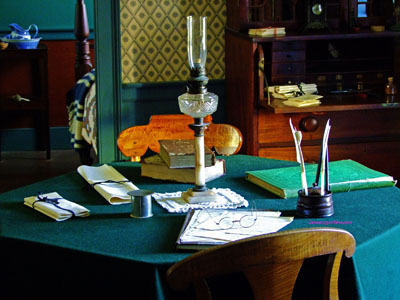Family
33. Family Bibles – This one is an old chestnut for genealogists who are experienced at tracking down relatives, but we feel compelled to mention it anyways. One hundred years ago most people were either illiterate or barely literate. The typical household had only a handful of books. One of these books was almost certainly a family bible (or other religious text depending on the religion of your ancestors). For many people, it was the only book they would ever read. It was also the place where many people would write down important information. Like the names and birthdays of family members. Spend the time asking your relatives if they have an old family bible. Check the blank pages on the inside front and back covers and you may make an incredible family discovery.
34. Existing Family Trees – In most families, there is usually one person (often a distant relative) who has spent the time and energy to put together the family tree. It is always a good idea to ask around the family to see if a family tree has already been created. Most genealogists know this and they also know to look at online family trees from various resources (try our Family Tree Search Engine which checks online family trees and genealogy forums).
One often overlooked resource for family trees are the local libraries near where your ancestors lived. Especially in small towns, a collection of published family histories in local libraries will often touch on some part of your family tree.
35. Picture in a Frame – So many clues can be gathered from looking at old family photographs that there are entire books devoted to the subject. There is, however, one simple exercise that should always be done with old family pictures that are framed. Take the photograph out of the frame and examine the back of the image. People often write notes on the back as to where the picture was taken and who is in the photograph. Don’t miss this simple exercise when looking at old family photographs.
This same trick can be used on family jewellry. Always inspect family jewellery (especially rings and bracelets) closely with a magnifying glass. Check for engravings of names and dates on the inside. Also check for stamps and other marks of the jeweller. This can be used to date the age of the jewellery.
36. Skip a Generation – Most people build their family tree by starting with themselves and working backward. This works well until it doesn’t work. When it doesn’t work well is when you come across an ancestor who seems to have treaded lightly on this earth. Some people can not be found simply because they never wanted to be found. People trying to escape debts, trying to escape businesses that have gone sour and trying to escape questionable (sometimes criminal) activity all had an incentive not to be found.
Even people who were never married or were married but never had children can often be difficult to trace. The solution: skip a generation. Try researching their parents first. Often a detailed knowledge of an ancestor’s parents can shed light on what happened to their children. You might even find your missing ancestor turning up in unexpected places, like a funeral sign-in book when one of the parents died.
37. Widows Remarrying – Except for the last couple of decades, economic necessity usually required a widow with children to remarry fairly quickly. It was not uncommon for a woman would remarry within three to four months of the death of her late husband. As well, women usually picked the church where they were married. These two facts can be used to your advantage. One way to trace the marriage of a widow is to start with the local church records from the date of the wake of her late husband and read forward on a day-by-day basis. Don’t be surprised to find a wedding within six months. This trick also works backwards. Start on the wedding day of the widow and go backward in time a couple of months and you will probably find the details on the death of the previous husband.


